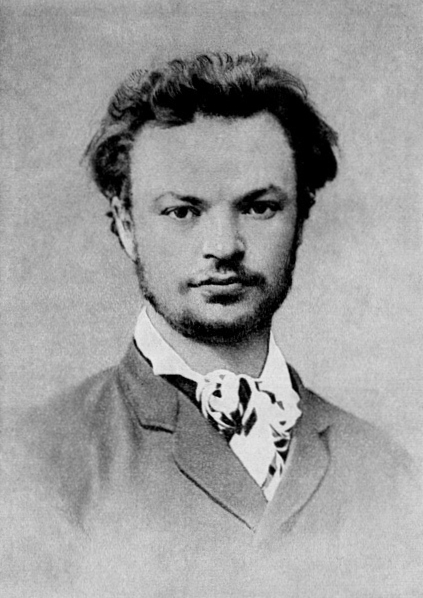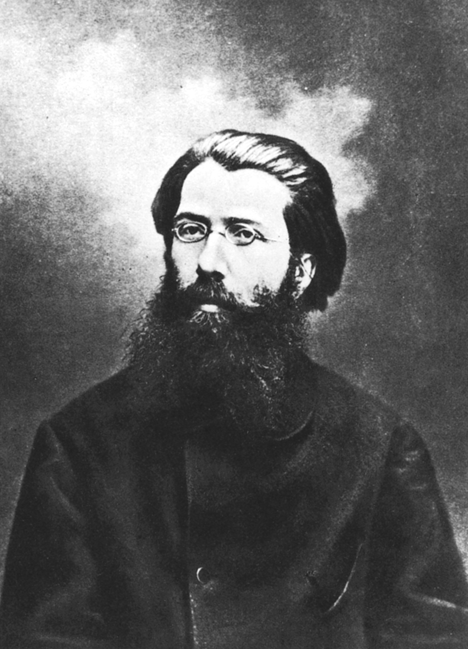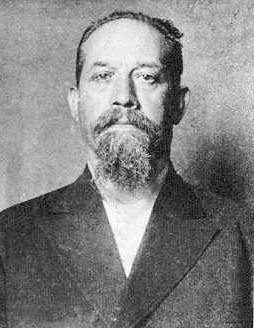|
Banda Del Matese
The Banda del Matese was a group of Italian republicans affiliated with the Italian First International who plotted an insurgent rebellion in the Matese mountains in 1877. The group of 26 men included later anarchist leaders ( Carlo Cafiero, Errico Malatesta Errico Malatesta (4 December 1853 – 22 July 1932) was an Italian anarchist propagandist, theorist and revolutionary socialist. He edited several radical newspapers and spent much of his life exiled and imprisoned, having been jailed and expel ...), veterans of Garibaldi (Pietro Ceccarelli, Vincenzo Farina), and Russian revolutionary Stepniak. Inspired by the 1875 rediscovery of Carlo Pisacane's writings, the group planned a rebellion through propaganda by deed in which they would occupy buildings, upset rail travel and communication, and encourage property redistribution as a means of showing their group's dedication to sociopolitical change. They surrendered to the military after six days. The group was acquitted ... [...More Info...] [...Related Items...] OR: [Wikipedia] [Google] [Baidu] |
First International
The International Workingmen's Association (IWA; 1864–1876), often called the First International, was a political international which aimed at uniting a variety of different left-wing socialist, social democratic, communist, and anarchist groups and trade unions that were based on the working class and class struggle. It was founded in 1864 in a workmen's meeting held in St. Martin's Hall, London. Its first congress was held in 1866 in Geneva. In Europe, a period of harsh reaction followed the widespread Revolutions of 1848. The next major phase of revolutionary activity began almost twenty years later with the founding of the IWA in 1864. At its peak, the IWA reported having 8 million members while police reported 5 million. In 1872, it split in two over conflicts between statist and anarchist factions and dissolved in 1876. The Second International was founded in 1889. St. Martin's Hall Meeting, London, 1864 On 28 September an international crowd of workers gathe ... [...More Info...] [...Related Items...] OR: [Wikipedia] [Google] [Baidu] |
Matese Mountains
The Matese (Italian: Monti del Matese or Massiccio del Matese) is a chain of mountains in southern Apennines, southern Italy. Geography The Matese mountains straddle two regions (Molise and Campania) and four provinces (Campobasso, Isernia, Benevento and Caserta). The highest peak, on the boundary between Molise and Campania, is the Monte Miletto, at 2,050 m, followed by La Gallinola (1,923 m a.s.l.), Monte Mutria (1,823 m a.s.l.), Monte Monaco di Gioia and Monte Maio. Westwards, it faces the middle valley of the Volturno River towards the Monti Trebulani, while eastwards it faces the Molisan Pre-Apennines; northwards it is bounded by the Mainarde chain and, from the south, by the Camposauro and Taburno mountains. From north to south, the massif has an extension of some 60 km, while from east to west it measures some 25 km. They are included in the regional Park of the Matese, and include a lake of glacial origin (Lake Matese), two artificial lakes (lakes of ... [...More Info...] [...Related Items...] OR: [Wikipedia] [Google] [Baidu] |
Carlo Cafiero
Carlo Cafiero (1 September 1846 – 17 July 1892) was an Italian anarchist that led the Italian section of the International Workingmen's Association (IWA). An early leader of the Marxist and anarchist communist movements in Italy, he was a key influence in the development of both currents. Born into a noble family in Apulia, he came to dislike the institutions of the Catholic Church and the monarchy, which drew him towards republicanism and revolutionary socialism. After moving to London, he fell under the influence of Karl Marx and Friedrich Engels, for whom he acted as an agent after returning to Italy. In Naples, he became a leader of the local internationalist movement, which consisted largely of anarchists. This caused friction between him and Engels, who saw anarchism as a threat to Marxism. As Marx and Engels consolidated control over the IWA, Cafiero gravitated closer to anarchism, culminated with his meeting with Mikhail Bakunin. He then presided over the affiliation ... [...More Info...] [...Related Items...] OR: [Wikipedia] [Google] [Baidu] |
Errico Malatesta
Errico Malatesta (4 December 1853 – 22 July 1932) was an Italian anarchist propagandist, theorist and revolutionary socialist. He edited several radical newspapers and spent much of his life exiled and imprisoned, having been jailed and expelled from Italy, Britain, France, and Switzerland. Originally a supporter of insurrectionary propaganda by deed, Malatesta later advocated for syndicalism. His exiles included five years in Europe and 12 years in Argentina. Malatesta participated in actions including an 1895 Spanish revolt and a Belgian general strike. He toured the United States, giving lectures and founding the influential anarchist journal ''La Questione Sociale''. After World War I, he returned to Italy where his ''Umanità Nova'' had some popularity before its closure under the rise of Mussolini. Biography Early years Errico Malatesta was born on 4 December 1853 to a family of middle-class landowners in Santa Maria Maggiore, at the time part of the city of Capua (c ... [...More Info...] [...Related Items...] OR: [Wikipedia] [Google] [Baidu] |
Vincenzo Farina
Vincenzo is an Italian male given name, derived from the Latin name Vincentius (the verb ''vincere'' means to win or to conquer). Notable people with the name include: Art *Vincenzo Amato (born 1966), Italian actor and sculptor * Vincenzo Bellavere (c.1540-1541 – 1587), Italian composer *Vincenzo Bellini (1801–1835), Italian composer *Vincenzo Camuccini (1771–1844), Italian academic painter * Vincenzo Catena (c. 1470 – 1531), Italian painter *Vincenzo Cerami (1940–2013), Italian screenwriter *Vincenzo Consolo (1933–2012), Italian writer *Vincenzo Coronelli (1650–1718), Franciscan friar, cosmographer, cartographer, publisher, and encyclopedist *Vincenzo Crocitti (1949–2010), Italian cinema and television actor *Vincenzo Dimech (1768–1831), Maltese sculptor *Vincenzo Galilei (1520–1591), composer, lutenist, and music theorist, father of Galileo *Vincenzo Marra (born 1972), Italian filmmaker *Vincenzo Migliaro (1858–1938), Italian painter *Vincenzo Natali ( ... [...More Info...] [...Related Items...] OR: [Wikipedia] [Google] [Baidu] |
Sergei Kravchinsky
Sergey Mikhaylovich Stepnyak-Kravchinsky (; 13 July 1851 – 23 December 1895), known in 19th-century London revolutionary circles as Sergius Stepniak, was a Russian revolutionary. He is mainly known for assassinating General Nikolai Mezentsov, chief of Russia's Gendarme corps and head of secret police, with a dagger in the streets of St. Petersburg in 1878. Early life Stepniak, the son of an army doctor and a noblewoman, was born on in Novy Starodub, Aleksandriya uezd, Kherson Governorate, Russian Empire (now in Ukraine). He received a liberal education, and when he left school, he went on to attend the Military academy and graduated from the Mikhailovsky Artillery Academy, Mikhailovsky Artillery Institute before joining the Imperial Russian Army. He reached the rank of second lieutenant before resigning his commission in 1871. Revolutionary life His sympathy lay with the peasants, among whom he had lived during his boyhood in the country, which led him to develop demo ... [...More Info...] [...Related Items...] OR: [Wikipedia] [Google] [Baidu] |
Carlo Pisacane
Carlo Pisacane, Duke of San Giovanni (1818–1857) was an Italian patriot and one of the first Italian socialist thinkers. He was an early advocate of propaganda by deed, arguing that violence was necessary not only to draw attention to, or generate publicity for, a cause, but also to inform, educate, and ultimately rally the masses behind the revolution. Biography Pisacane was born in Naples to an impoverished noble family, and entered the Neapolitan army in 1839; but having become imbued with Mazzinian ideas he emigrated in 1847, and after a short stay in England and France served in the French army in Algeria. The revolution of 1848 recalled him to Italy; he played a part in the brief Roman Republic, and was an instrumental part of the war commission in the defence of the city. After its capture by the French, he again went into exile, first to London and then to Genoa, maintaining himself by teaching. Pisacane regarded the rule of the House of Savoy as no better than that ... [...More Info...] [...Related Items...] OR: [Wikipedia] [Google] [Baidu] |
Propaganda By Deed
Propaganda of the deed, or propaganda by the deed, is a type of direct action intended to influence public opinion. The action itself is meant to serve as an example for others to follow, acting as a catalyst for social revolution. It is primarily associated with acts of violence perpetrated by proponents of insurrectionary anarchism in the late 19th and early 20th century, including bombings and assassinations aimed at the state, the ruling class in a spirit of anti-capitalism, and church arsons targeting religious groups, even though propaganda of the deed also had non-violent applications. These acts of terrorism were intended to ignite a "spirit of revolt" by demonstrating the state, the middle and upper classes, and religious organizations were not omnipotent as well as to provoke the State to become escalatingly repressive in its response. The 1881 London Social Revolutionary Congress gave the tactic its approval. Theoretical development Formulation The foundations of prop ... [...More Info...] [...Related Items...] OR: [Wikipedia] [Google] [Baidu] |
Anarchist Organisations In Italy
Anarchism is a political philosophy and movement that seeks to abolish all institutions that perpetuate authority, coercion, or hierarchy, primarily targeting the state and capitalism. Anarchism advocates for the replacement of the state with stateless societies and voluntary free associations. A historically left-wing movement, anarchism is usually described as the libertarian wing of the socialist movement (libertarian socialism). Although traces of anarchist ideas are found all throughout history, modern anarchism emerged from the Enlightenment. During the latter half of the 19th and the first decades of the 20th century, the anarchist movement flourished in most parts of the world and had a significant role in workers' struggles for emancipation. Various anarchist schools of thought formed during this period. Anarchists have taken part in several revolutions, most notably in the Paris Commune, the Russian Civil War and the Spanish Civil War, whose end marked the end ... [...More Info...] [...Related Items...] OR: [Wikipedia] [Google] [Baidu] |
Kingdom Of Italy (1861–1946)
The Kingdom of Italy (, ) was a unitary state that existed from 17 March 1861, when Victor Emmanuel II of Kingdom of Sardinia, Sardinia was proclamation of the Kingdom of Italy, proclaimed King of Italy, until 10 June 1946, when the monarchy was abolished, following civil discontent that led to an 1946 Italian institutional referendum, institutional referendum on 2 June 1946. This resulted in a modern Italian Republic. The kingdom was established through the unification of several states over a decades-long process, called the . That process was influenced by the House of Savoy, Savoy-led Kingdom of Sardinia (1720–1861), Kingdom of Sardinia, which was one of Italy's legal Succession of states, predecessor states. In 1866, Italy Third Italian War of Independence, declared war on Austrian Empire, Austria in Italo-Prussian Alliance, alliance with Kingdom of Prussia, Prussia and, upon its victory, received the region of Veneto. Italian troops Capture of Rome, entered Rome in 1870, ... [...More Info...] [...Related Items...] OR: [Wikipedia] [Google] [Baidu] |
International Workingmen's Association
The International Workingmen's Association (IWA; 1864–1876), often called the First International, was a political international which aimed at uniting a variety of different left-wing socialist, social democratic, communist, and anarchist groups and trade unions that were based on the working class and class struggle. It was founded in 1864 in a workmen's meeting held in St. Martin's Hall, London. Its first congress was held in 1866 in Geneva. In Europe, a period of harsh reaction followed the widespread Revolutions of 1848. The next major phase of revolutionary activity began almost twenty years later with the founding of the IWA in 1864. At its peak, the IWA reported having 8 million members while police reported 5 million. In 1872, it split in two over conflicts between statist and anarchist factions and dissolved in 1876. The Second International was founded in 1889. St. Martin's Hall Meeting, London, 1864 On 28 September an international crowd of workers gathered ... [...More Info...] [...Related Items...] OR: [Wikipedia] [Google] [Baidu] |
Insurrectionary Anarchism
Insurrectionary anarchism is a revolutionary theory and tendency within the anarchist movement that emphasizes insurrection as a revolutionary practice. It is critical of formal organizations such as labor unions and federations that are based on a political program and periodic congresses. Instead, insurrectionary anarchists advocate informal organization and small affinity group based organization. Insurrectionary anarchists put value in attack, permanent class conflict and a refusal to negotiate or compromise with class enemies. Associated closely with the Anarchism in Italy, Italian anarchist movement, the theory of insurrectionary anarchism has historically been linked with a number of propaganda of the deed, high-profile assassinations, as well as the bombing campaigns of the Galleanisti and Informal Anarchist Federation (FAI). History Development Among the earliest inspirations for insurrectionary anarchism was Max Stirner's 1845 book ''The Ego and Its Own'', a tract t ... [...More Info...] [...Related Items...] OR: [Wikipedia] [Google] [Baidu] |








